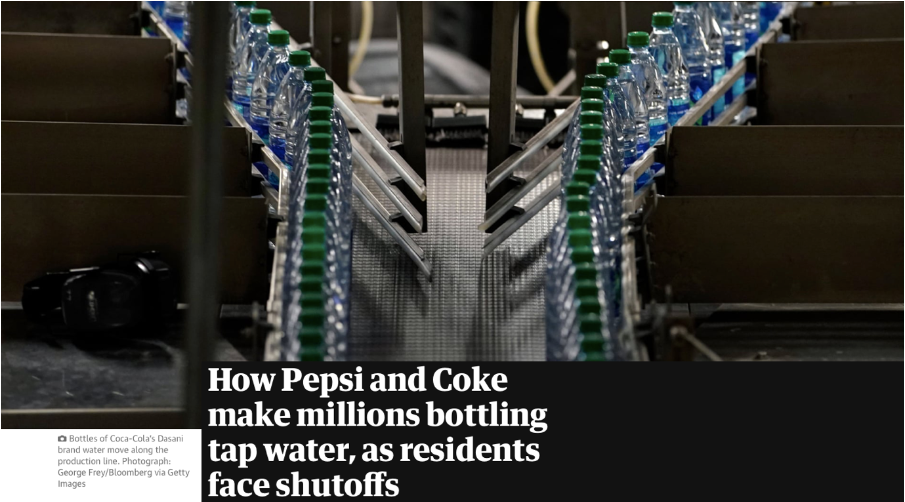Have you ever thought about the role that water plays in our everyday lives and how it affects our bodies? We always hear about the importance of eating right, choosing quality and organic food, exercising, and taking care of our mental well-being for our health. However, we often forget about the importance of water. Even though water profoundly impacts our health, we often seem not to think about what kind of water we should drink for optimal hydration and vitality. Most of us automatically pour a glass of tap water or buy bottled water from the store without thinking about it much further.
However, water is the second most important factor for life after air. It makes up about 70 % of our body, which clearly shows how important it is for us. It helps with the proper functioning of cells, organs, and systems in our body. This clearly demonstrates its importance in our health. So, it’s really important to make sure we’re drinking enough water. When we don’t drink enough, we can feel tired and dehydrated, and our body won’t be able to do its basic functions properly. So, let’s make sure we’re getting enough water and also keeping an eye on its quality. Have you ever thought about what’s in the water you drink?

Not all water is equal. According to research, tap water often contains chemicals, pesticides, and now even microplastics [1]. These substances are also commonly found in bottled water, which in most cases is just tap water. Companies like Coca-Cola and Pepsi (yes, these companies also sell bottled water) make millions from selling this water, yet producing plastics ☹ What is even more concerning than the fact that companies sell ordinary tap water and make millions from it. They are producing plastic pollution. Every year, 600 billion plastic bottles are produced by companies, and it is predicted that this number is going to double. 35 billion plastic bottles are used annually, and 700,000 plastic bottles end up in the ocean or landfill every minute [2].

Picture source: The Guardian, 2020, photo: George Frey/ Bloomberg via Getty Images
What is commonly found in water?
In tap water, there can be various substances, but what’s important is the quantity of those substances. The allowed levels of substances in the UK are according to the Drinking Water Standards and Regulations which is according to the European legislation since 2020 [3], [4]. You can find out your water provider (here) and do a quick test at home yourself to find out ☺.
- Calcium and magnesium – important for the body, but excessive amounts cause water hardness.
- Sodium – is present in water, with a maximum allowed concentration of 200 mg/l.
- Chlorides – higher values change the taste of water and cause metal corrosion. In higher proportions, they can cause muscle weakness, fatigue, or high blood pressure [5].
- Iron – naturally occurs in water, higher concentrations can cause health problems.
- Manganese – often occurs with iron, higher concentrations have similar effects.
- Other substances – drinking water may contain additional substances such as fluorides, nitrites, nitrates, sulfates, heavy metals, and other substances, which can also be dangerous for humans [6].
Dangerous Substances in Tap Water
Tap water can contain mechanical impurities such as rust, sediment (sand, clay, silt), and microplastics. These impurities can be a problem, especially in older buildings and with private water sources. The presence of mechanical impurities may not pose a severe threat to our health, but they can damage our domestic appliances [7].
- Microplastics are found in water even after the water treatment process. Their concentration ranges from tens to a few thousand per liter of raw water and in units to hundreds of particles per liter of treated (drinking) water. The most common plastics are PET, PP, and PE. Water treatment plants are only able to remove 70-80%, with the rest going directly into our tap water [8].
- Pesticides and fertilizers used in agriculture. We usually try to avoid them by buying organic food, but did you know that you still consume them? These substances can reach groundwater and, consequently, drinking water. Even though limits are set for these substances, their long-term impact on health is not sufficiently explored, but it probably won’t be anything pleasant.
- Hormones (e.g. from birth control), medication residues, and drugs can enter drinking tap water through urine. Wastewater treatment plants are unable to remove these substances from the water. According to research, they are present only in trace concentrations, but long-term consumption can be very dangerous for our health.
- Heavy metals – iron, lead, cadmium, nickel, arsenic, mercury, copper, or aluminum. Water should not contain these metals in larger doses, and if it does, it may be due to corroding pipes, for example. Some metals, such as nickel, can cause skin allergies. Consumption of heavy metals can have health impacts on the liver, digestive, circulatory, and nervous systems [11][12].
- Coliform bacteria – they can cause inflammatory and diarrheal diseases, vomiting, and nausea. If you drink hot water from the tap, the probability of bacteria (specifically Legionella, which occurs in pipes, boilers, and radiators) multiplying increases. Therefore, it is better not to drink hot water from the tap! [13]
- Chlorine – chlorine is commonly used to treat water, as it eliminates bacteria and viruses, but it produces disinfection by-products, known as trihalomethanes (THMs). These substances are carcinogenic [14]. A large amount of chlorine is toxic to humans, and furthermore, its taste is certainly not pleasant, nor does it smell good. However, consuming chlorine in drinking water is not the only way our body comes into contact with it. We often forget that chlorine also penetrates our body through the skin (our largest organ) during everyday activities such as dishwashing or showering. According to studies, the highest health risk from this substance comes from inhaling it during showering [15].
What is the solution?
The easiest way to achieve high-quality drinking water is through filtration. Personally, I have invested in a water ionizer that not only filters water but also changes its structure without removing essential minerals. Through a process called electrolysis, it enriches water with molecular hydrogen (H2) – a powerful antioxidant. Its therapeutic potential has been demonstrated in over 1500 scientific studies for more than 170 different human and animal diseases. It has the ability to quickly penetrate all tissues and cells and fight oxidative stress. Ionized and filtered water tastes much better and has several functions and benefits! The water ionizer removes chlorine, pesticides, herbicides, and chemicals (anionic surfactants), while adjusting the water’s pH as needed. With different pH levels, it has up to 100 different uses. For the past two years, I have been drinking and using only this water, which is the only one with a medical award from Japan, and the manufacturer calls it “KANGEN” – which means “return to origin” in English, or returning to the most natural form of water. Since I started drinking this water, I have felt a tremendous difference in energy levels, hydration, skin improvement, and immune enhancement. And I’m definitely not the only one :). I often hear similar experiences and more stories from my family and surroundings. You can see for yourself in the “testimonials” highlight on my Instagram, where I share my own and other’s experiences with the water.

Water as a cleaning product, conditioner, and make-up remover?
Water ionizer does not only produce drinking water! Thanks to the different pH levels that this machine produces, ranging from highly acidic pH 2.5 to highly alkaline pH 11.5, you can replace several products. As I mentioned before, different types of water can be used in different ways, which we will discuss later. This means long-term cost savings and reduced consumption of plastics, packaging, and unnecessary products :). Additionally, you are protecting your health and the environment by avoiding exposure to toxic substances often found in common products. For me, it’s an absolute win!
Among my favourites are: hair conditioner, acne products and facial toner, laundry detergent, makeup remover, pesticide remover for vegetables and fruits, and household cleaning products (and more…). The ionizer, for example, produces hypochlorous acid (pH 2.5), a highly effective, natural disinfectant that even our own immune system uses to fight bacteria [16].
Imagine that cleaning your home or disinfecting your hands can be safe even if you touch or even lick them! What’s better than keeping children, pets, and yourself safe from harmful chemicals? Water with a pH of 2.5 can be used as mouthwash, hand sanitizer, disinfectant, and treat cuts and infections [16].
On the other hand, highly alkaline water with a pH of 11.5 can tackle anything that is oil-based – it removes stains from clothing, and pesticides from vegetables and fruits (just soak the food for a few minutes and the water will remove the pesticides), and from personal experience, this water even polishes windows, floors, and jewelry. I also use it instead of cleaning products for all the surfaces in the household [17, 18].
Slightly acidic water with a pH of 6 is loved by flowers, plants, as well as your skin and hair! This water isn’t called a “beauty water” by an accident, I love to use it as a toner for my skin.
What now? Buying bottled water with different pH levels would not be the most environmentally friendly solution and it can also be quite expensive. However, if you have an ionizer at home, you will have an endless supply of this water for your household. The lifespan of this machine is approximately 25+ years, and you only need to replace the filter and replenish the electrolysis liquid once in a while (usually after 1 year, depending on the quality of the water where you live). By doing so, you’ll be all set!
If you are as fascinated by water as I am, let’s connect on Instagram – Shark.y.s. I share more information and discuss this topic on my page. Feel free to send me a DM and let’s chat about water. 😊
Sources
[1] https://www.ih.cas.cz/mikroplasty-ve-vode/
[2] https://www.theguardian.com/us-news/2020/apr/23/pepsi-coke-bottled-water-consumer-reports
[3] https://hygiena.szu.cz/pdfs/hyg/2021/01/05.pdf
[4] https://www.dwi.gov.uk/drinking-water-standards-and-regulations/
[5] https://www.hsph.harvard.edu/nutritionsource/chloride/
[6] https://www.moni.cz/aktuality/slozeni-pitne-vody
[7] https://eshop.mytapp.cz/blog/jak-kohoutkova-voda-ovlivnuje-nase-zdravi/
[8] https://www.ih.cas.cz/mikroplasty-ve-vode/
[9] https://szu.cz/temata-zdravi-a-bezpecnosti/zivotni-prostredi/kvalita-vody/pitna-voda/k-ota
[10] https://www.sciencedirect.com/science/article/abs/pii/S0269749112000668
[11] http://www.ijirset.com/upload/july/56_%20REVIEW.pdf
[12] https://www.priznaky-projevy.cz/alergie/522-kozni-alergie-na-nikl-priznaky-projevy-symptomy/
[13] https://www.vodatest.cz/bakterie-legionella-kompletni-informace-o-tomto-neviditelnem-zabijakovi
[14] https://pubmed.ncbi.nlm.nih.gov/17727920/
[16] https://pubmed.ncbi.nlm.nih.gov/27052464/
[17] https://www.ncbi.nlm.nih.gov/pmc/articles/PMC6388112/
[18] https://www.medicalnewstoday.com/articles/327185#effect-on-water

0 Comments